The idea of limiting the power of digital giants is not new. Rules punishing abuse of dominant position or unfair business practices already exist. What's about to change?
The Digital Markets Act, or DMA for short, which is currently being negotiated in non-public consultations between the EU Parliament, Council and Commission, aims to provide a uniform EU-wide legal framework for digital markets in order to proactively prevent distortions of competition and stop certain business practices.The aim is also to facilitate the application of the law and speed up the process.
Why are the existing rules insufficient?
So far, especially in antitrust law, we have only ex-post rules: these only take effect after an infringement has occurred or is suspected. As a result, it takes a very long time before the behavior is sanctioned. In some cases, the contested acts took place up to ten years ago and the legal proceedings have still not been concluded. The result is that antitrust law is too slow because it takes action reactively.
What should change?
The basic concept of the DMA is upfront regulation: it will impose a mandatory code of conduct on major online service providers. With this in mind, it contains over a dozen directives and prohibitions, formulated in more or less specific language, with which these service providers are required to comply a priori. Failure to comply could result in severe sanctions. For example, the EU Commission has the power to fine service providers up to 20 per cent of their annual global turnover.
We'll come to the new rules in a moment. But first: Who does the planned regulation actually apply to?
According to the European Council's first press release, a service provider will be considered a "gatekeeper" if the parent company generates an annual turnover in excess of €7.5 billion or has a market value of more than €75 billion in the EU. The service also has to have had over 45 million end users per month and 10,000 commercial users within the EU per year over the past three years.
The respective service provider also has to offer one or more core services, such as social networks, search engines, browsers, messenger services, or virtual assistants, in at least three EU member states. However, networked TVs are not included.
Which obligations will gatekeepers have in the future?
So far, there are 18 obligations, but the list of obligations may be larger after the negotiations. Particularly relevant, for example, are prohibitions on tying registration for one service to registration for another, or prohibiting commercial users from offering their products and services on third-party platforms at different prices and conditions. In addition, operating systems such as Google's Android or Apple's iOS would have to allow app stores other than their own to be installed on smartphones. Self-preferential practices are to be explicitly prohibited, for example by offering consumers preferential treatment for the company's own services, thereby closing the market to smaller or new competitors. In the future, it will also no longer be permitted to combine and use data for certain purposes, as Facebook is accused of doing.
The new interoperability requirement is also of particular relevance to consumers. For example, messaging services that have been classified as gatekeepers will be required to permit their users to exchange messages and make video calls between different platforms (e.g., Whatsapp and Threema).
Sounds like Lex Google, Lex Apple, Lex Facebook ...
Indeed, many of the specific provisions are based on cases in which the EU Commission and the national competition authorities have taken legal action against these companies. Individual laws cannot exist, but it is of course possible to define abstract criteria for market activity in the EU in order to prevent as much problematic behavior as possible.
Certainly, it will hit the U.S. tech giants in particular with their services at the beginning: Apple's and Google's Appstore, Microsoft's Bing in addition to Google's search engine, Facebook and Whatsapp or Amazon Marketplace. The cloud computing segment of Amazon, for example, which is important for B2B and accounts for the largest share of the corporate profit, will also be affected.
However, the extent to which the regulations will apply to European platform services such as Booking or Zalando remains unclear.
Can the regulation make the digital markets more open and fairer?
The crucial point is how the regulations will be applied and enforced in practice. So whether the agreed procedure will work as intended – including, in particular, the dialogue foreseen between the EU Commission and the “gatekeepers” concerning the regulatory measures – will be clarified in due course. Another open question is whether the envisaged collaboration between the national authorities and the EU Commission will be effective. It also remains to be seen which role the national courts will ultimately play in enforcing the DMA regulations.
The EU Commission is expected to play a significant role. What is it?
Although it has been controversial among the member states, the EU Commission is to be given a very central role. The DMA permits the Commission to order a wide variety of measures against gatekeepers. These can be behavioral measures, i.e. that a company may no longer do something specific or must do something, and structural measures such as the separation of entire business units. At the same time, the Commission is supposed to monitor compliance with the orders. All this requires the EU Commission to create numerous additional positions with specific expertise. Indeed, the EU Commission will be taking on a completely new role as a regulatory authority, and it will be interesting to see if it will ultimately be able to stand up to the big tech companies on an equal footing.
Assuming everything goes according to plan and the European Parliament and Council give their official consent, the new regulation will come into force in 2023. Can all these innovative provisions be implemented immediately?
That remains to be seen. The problem is that many technical issues that are legally relevant are not solved, but only postponed. The fine-tuning is done by means of so-called Delegated Acts, which have yet to be issued by the Commission. In reality, this can take years. One example: Until now, Deutsche Bahn has not been obliged to make real-time information about its trains available to other transport information services such as Google Maps. The relevant EU Directive governing this has been in place since 2010, but the legal details came in 2017 in a Delegated Act from the Commission. The rules were not incorporated into the German Passenger Transportation Act until 2021, and it is still not clear to what extent Deutsche Bahn will have to provide real-time information.
What else is needed?
The effectiveness of enforcement by the public sector, in this case by the EU Commission, always depends on the political impetus. And priorities can change quickly in this regard. The current Commission, with Margrethe Verstager as Digital Commissioner, has the DMA high on its list, so the rules have come surprisingly fast. But it doesn't guarantee that if there is a new Commission with a new agenda, it will continue with the same verve.
The interview was conducted by Michaela Hutterer
Personal website of Heiko Richter





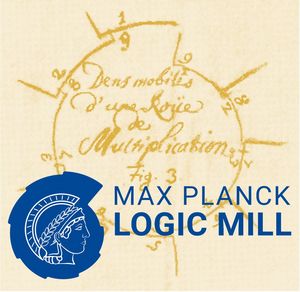
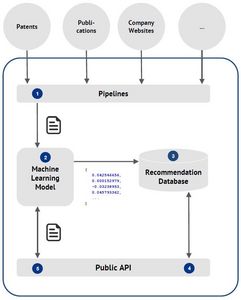



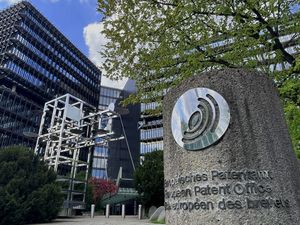



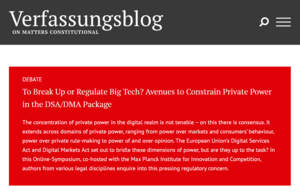
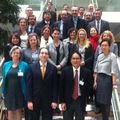
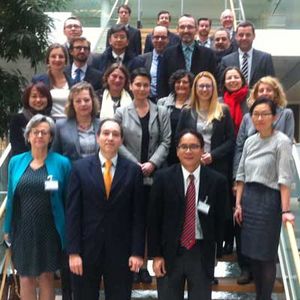

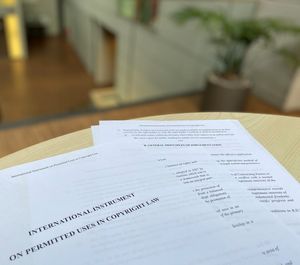
![[Translate to english:] [Translate to english:]](/fileadmin/_processed_/0/a/csm_Justizpalast_Muenchen__Foto_Justiz_Bayern__Zuschnitt1_762b495fef.jpg)
![[Translate to english:] [Translate to english:]](/fileadmin/_processed_/0/a/csm_Justizpalast_Muenchen__Foto_Justiz_Bayern__Zuschnitt1_10bcd9bafd.jpg)